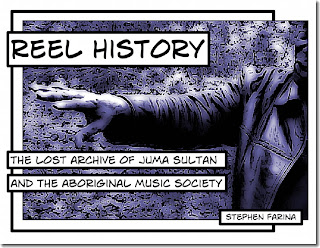I'm never going to make it onto the
Hot Guys Reading Books blog (fascinating concept in the history of reading, no?), but I am a guy who is presently engaged in reading books. Lots of them. During the academic year, while I deal with the non-stop demands of teaching, committee-work, and administration, I rarely have time to read. Still, every year, there are about a dozen or so new books on fans and audiences that I really
must read, a situation that puts the pressure on me during my breaks from teaching to take them all out of the library. I rarely get through the whole pile, but with due diligence I do begin to acquaint myself with some of the latest interesting work in the field. Maybe there needs to be a Harried Professors Reading Books blog.
This summer, I've been trying to catch up with recently-published books on popular music by
Will Hermes,
Patti Smith,
Kevin Fellezs,
Claudio Benzecry,
William Roy,
John Street,
Steven Feld,
Kiri Miller, and
Harry Belafonte. I've already
reviewed Hermes' Love Goes to Buildings on Fire and will talk about some of the others, soon, on this blog.
Of course, while I've been focusing on music, I've been noticing a host of books on audience that have been cropping up in
other fields. Just quickly, for example, here are a few books about ardent reading that I ardently wish to read:
Michael Millner,
Fever Reading (University of New Hampshire Press, 2012)
"Drawing on a rich archive of scandal chronicles, pornography, medical journals, religious novels, and popular newspapers, as well as more canonical sources, Michael Millner examines the panics and paranoia associated with “bad reading” in the United States from the late eighteenth century to the Civil War. Weaving into his analysis a model of emotion recently developed in cognitive psychology, he provides the back-history to our present-day debates about “bad” reading and shows how these debates—both in the past and in the present—are in part about the shape of the public sphere itself."
Birgit Brander Rasmussen,
Queequeg's Coffin (Duke University Press, 2012)
"The encounter between European and native peoples in the Americas is often portrayed as a conflict between literate civilization and illiterate savagery. That perception ignores the many indigenous forms of writing that were not alphabet-based, such as Mayan pictoglyphs, Iroquois wampum, Ojibwe birch-bark scrolls, and Incan quipus. Queequeg's Coffin offers a new definition of writing that comprehends the dazzling diversity of literature in the Americas before and after European arrivals. This groundbreaking study recovers previously overlooked moments of textual reciprocity in the colonial sphere, from a 1645 French-Haudenosaunee Peace Council to Herman Melville's youthful encounters with Polynesian hieroglyphics.
By recovering the literatures and textual practices that were indigenous to the Americas, Birgit Brander Rasmussen reimagines the colonial conflict as one organized by alternative but equally rich forms of literacy. From central Mexico to the northeastern shores of North America, in the Andes and across the American continents, indigenous peoples and European newcomers engaged each other in dialogues about ways of writing and recording knowledge. In Queequeg's Coffin, such exchanges become the foundation for a new kind of early American literary studies."
Barbara Hochman,
Uncle Tom's Cabin and the Reading Revolution (University of Massachusetts Press, 2011; recently won the 2012 DeLong Book History Prize from SHARP: The Society for Authorship, Reading, and Publishing)
"Uncle Tom's Cabin" and the Reading Revolution explores a transformation in the cultural meaning of Stowe’s influential book by addressing changes in reading practices and a shift in widely shared cultural assumptions. These changes reshaped interpretive conventions and generated new meanings for Stowe’s text in the wake of the Civil War.
During the 1850s, men, women, and children avidly devoured Stowe’s novel. White adults wept and could not put the book down, neglecting work and other obligations to complete it. African Americans both celebrated and denounced the book. By the 1890s, readers understood Uncle Tom’s Cabin in new ways. Prefaces and retrospectives celebrated Stowe’s novel as a historical event that led directly to emancipation and national unity. Commentaries played down the evangelical and polemical messages of the book.
Illustrations and children’s editions projected images of entertaining and devoted servants into an open-ended future. In the course of the 1890s, Uncle Tom’s Cabin became both a more viciously racialized book than it had been and a less compelling one. White readers no longer consumed the book at one sitting; Uncle Tom’s Cabin was now more widely known than read. However, in the growing silence surrounding slavery at the turn of the century, Stowe’s book became an increasingly important source of ideas, facts, and images that the children of ex-slaves and other free-black readers could use to make sense of their position in U.S. culture."




















